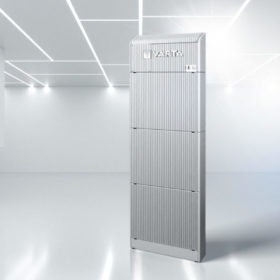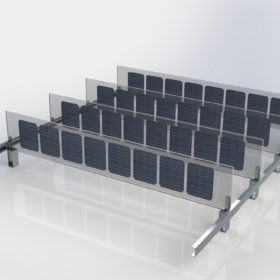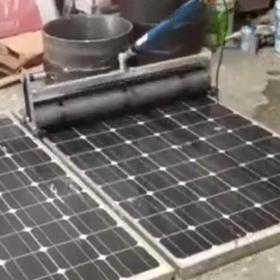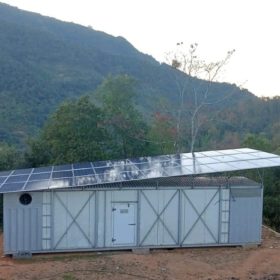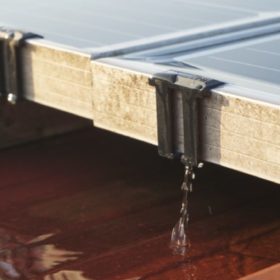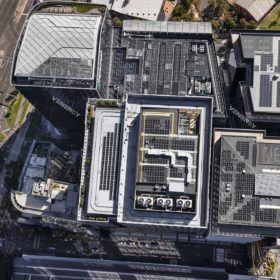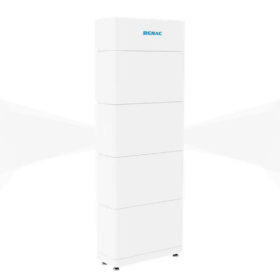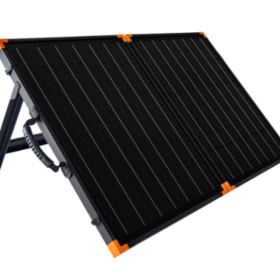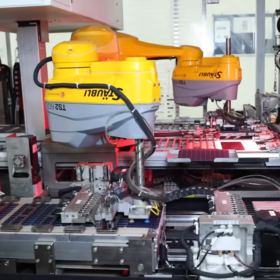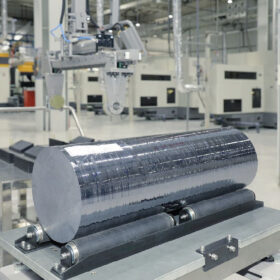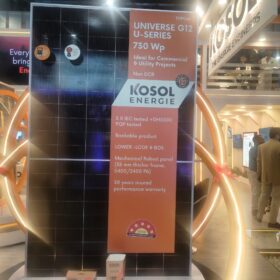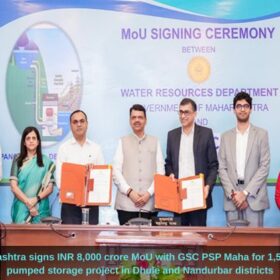High-voltage residential battery from Varta
The new high-voltage Varta.wall storage device features an aluminum design and is available in capacities ranging from 10 kWh to 20 kWh. It also boasts an emergency power function.
Solis unveils off-grid PV inverter
The S5-EO1P(4-5)K-48 series off-grid PV inverter has an efficiency of 96.7% and supports parallel operation of up to 10 units, which allows for a system capacity of up to 50 kW. According to the manufacturer, the device is compatible with all top-tier brands of lithium-ion and lead-acid batteries.
Vertical PV system for green rooftops
Norwegian startup Over Easy Solar AS is launching a vertical PV system for rooftop applications at this year’s Smarter E in Munich, Germany.
Bhago Mobility acquires stake in lithium battery supplier Pastiche
Bhago Mobility Solutions, the green energy vertical of automotive parts manufacturer Modern Automotive, will invest $16 million in a partnership with Pastiche. They plan to jointly develop solid-state and lithium-ion batteries for electric mobility and energy storage.
Handheld tool to clean rooftop solar panels
Mumbai-based Cleo Tech has developed a battery-powered, handheld tool for scratch-free, dry cleaning of solar panels. The tool’s cleaning brush clings end-to-end on the aluminum frames of the panels, avoiding direct contact of the moving parts with the cells, other than the soft nylon bristles.
Multi-chamber solar cold storage system
Uttar Pradesh-based Inficold has developed a multi-chamber, solar-powered cold storage solution that facilitates the storage of multiple perishable commodities in different temperature-controlled chambers, all under their respective ideal storage conditions.
New water-draining device for rooftop PV systems
Portuguese startup Solarud has developed a way to eliminate soiling around the frames of PV panels with low inclination slopes. The device drains water that would otherwise stay stagnant on the surface of modules.
The long read: Sky-scraping solar
As people have gradually migrated to the world’s cities, urban areas have migrated upward to scrape the sky. And yet, while one of the first principles of power generation is to generate as close as possible to the point of consumption, energy systems have long been designed to deliver electricity to major cities from distant hubs. But now, thanks to recent advances in solar panel energy density and building-integrated PV, vertical cities could soon be standing tall under their own power.
Renac Power unveils high-voltage residential battery
Renac Power’s new plug-and-play battery has a storage capacity of 3.74 kWh, but it can be enhanced in series with up to five batteries to 18.7 kWh. It has a nominal voltage of 96 V and a voltage range of 81 V to 108 V.
Solar briefcase packs in 200 W for off-grid, mobile living
FlexSolar has developed a foldable, portable PV briefcase kit with a charge controller and connection cables.
